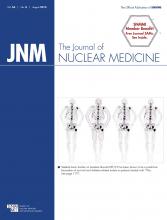REPLY: We thank Drs. Groheux and Hindié for their comments on our article (1). Their position and ours are quite similar. We both support the growing evidence for using 18F-FDG PET/CT for systemic staging of patients with newly diagnosed stage III or IIB breast cancer (1,2), because the detection of unsuspected distant metastases in these patients would alter treatment from neoadjuvant or surgical to palliative systemic. Although our study specifically examined the yield of 18F-FDG PET/CT for patients less than 40 y old, the study that Drs. Groheux and Hindié cite was unselected for age. It is of course difficult to compare studies that vary in design and are from regions that may potentially encompass different patient populations, but we note that the yield of 18F-FDG PET/CT for detecting distant metastases for each initial stage was higher in the cohort of patients less than 40 y old than in the cohort unselected for age. For example, the rate of upstaging to distant metastatic disease (stage IV) in initially stage IIB patients was 17% for patients less than 40 y old (1) and 10.7% for patients unselected for age (2). Thus, although 18F-FDG PET/CT may be considered for any patient with newly diagnosed stage IIB or III breast cancer, the value of the examination may be higher for younger patients.
We caution that further evaluation is still warranted. There are still several patient and tumor factors that have not been adequately addressed. For example, tumor histology may influence the utility of 18F-FDG PET/CT for systemic staging of patients with breast cancer. Indeed, on 18F-FDG PET both primary (3) and metastatic (4) lesions from invasive lobular carcinoma are less apparent than comparable lesions from invasive ductal carcinoma. Thus, the utility of 18F-FDG PET/CT for systemic staging of patients with newly diagnosed invasive lobular carcinoma may not be as strong as for patients with invasive ductal carcinoma. The histologic subtype of breast cancer may also affect the evaluation of prognosis in initial (5) and metastatic (6,7) breast cancer, as well as the evaluation of treatment response (8).
Although there is growing evidence in support of offering 18F-FDG PET/CT to all patients with newly diagnosed stage IIB or III breast cancer, we must continue to investigate this issue.
Footnotes
Published online Jun. 25, 2015.
- © 2015 by the Society of Nuclear Medicine and Molecular Imaging, Inc.







